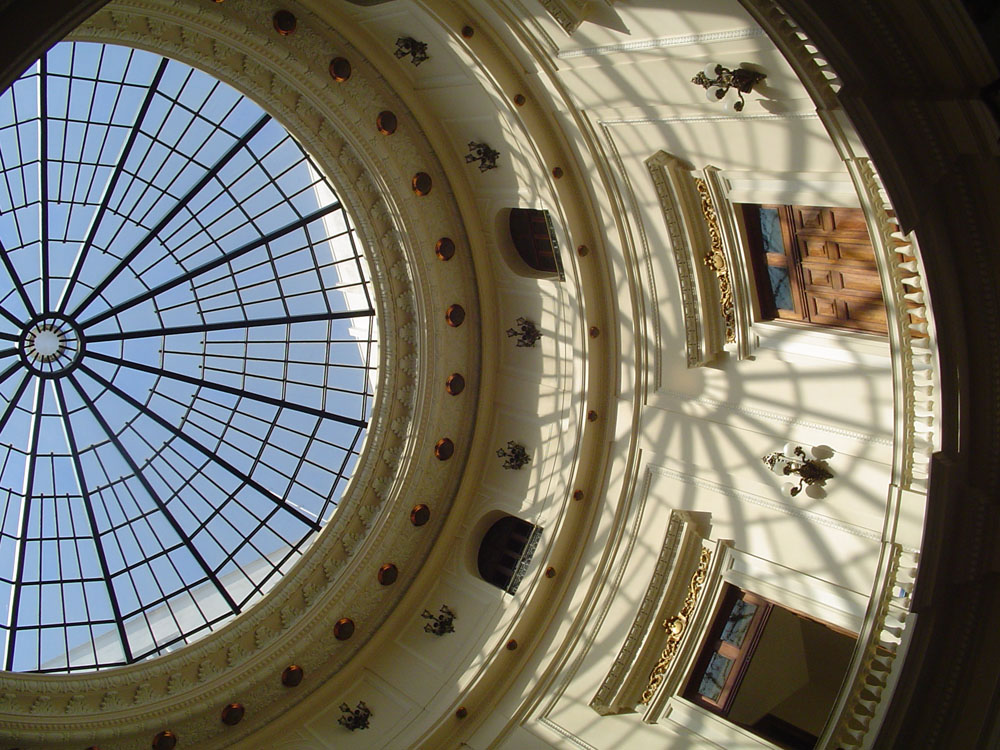
Open skylights were used in Ancient Roman architecture, such as the oculus of the Pantheon. Glazed ‘closed’ skylights have been in use since the Industrial Revolution made advances in glass production manufacturing. Mass production units since the mid-20th century have brought skylights to many uses and contexts. Energy conservation has brought new motivation, design innovation, transmission options, and efficiency rating systems for skylights.
Prior to the Industrial Revolution, it was France that probably had the leading technology in architectural glass. One of the earliest forms of the glass skylight can be seen at the Palace of Versailles in the Galerie des Batailles, which was added onto the existing palace by Louis Philippe in 1830. Another form that displays early sky lighting technology is the Halle aux blés (Paris) built in 1763–67. This form of natural overhead lighting allowed for illumination while decoration could cover the entire interior wall, and it is the option least obstructed by other buildings. This means that sky lighting as we know it, in many forms today, was probably pioneered in France during the early 18th century or late 17th century. According to architectural glass, the earliest functional skylights would have been formed by either glass casting, crown glass (window), cylinder blown sheet, and machine drawn cylinder sheet, or Fourcault process.
Skylighting types include roof windows, unit skylights, tubular daylighting devices (TDDs), sloped glazing, and custom skylights. Uses include:
- daylighting elements used to allow direct and/or indirect sunlight, via toplighting.
- providing a visual connection to the outdoor environment to interior occupants.
- sustainable building—passive solar heating, and with operable units; ventilation for passive cooling and fresh air exchange.
Open skylight
An unglazed hole in a roof.Fixed unit skylight
A fixed skylight consists of a structural perimeter frame supporting glazing infill (the light-transmitting portion, which is made primarily of glass or plastic). A fixed skylight is non-operable, meaning there is no ventilation.Operable skylight
An operable (venting) unit skylight uses a hinged sash attached to and supported by the frame. When within reach of the occupants, this type is also called a roof window.
